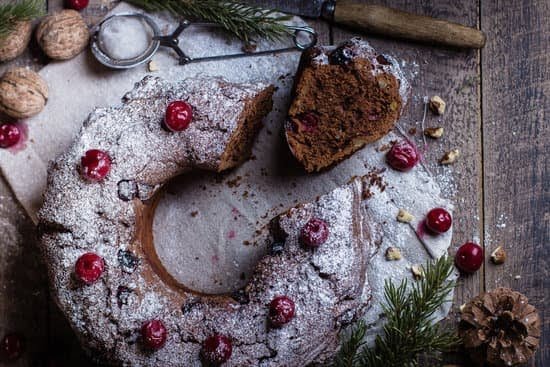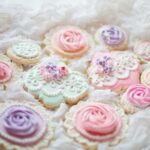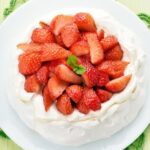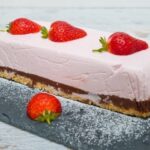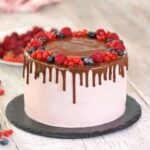Are you wondering how to add fondant decorations to a buttercream cake? Fondant has become increasingly popular for cake decorating due to its smooth and polished finish, making it the perfect choice for adding decorative elements to buttercream cakes. From simple shapes to intricate designs, fondant decorations can elevate the visual appeal of any dessert, making it a favorite among both professional bakers and home bakers alike.
Fondant is a versatile medium that offers endless possibilities for creativity when it comes to cake decorating. Whether you’re looking to create a whimsical birthday cake or an elegant wedding cake, fondant allows you to bring your design ideas to life with precision and detail. Understanding how to work with fondant and incorporating it into buttercream cakes can take your baking skills to the next level and impress your friends and family with professionally decorated desserts.
In this article, we will explore the world of fondant decorations on buttercream cakes, providing you with step-by-step instructions, helpful tips, and creative ideas. From preparing the buttercream base to troubleshooting common issues, we will guide you through the process of adding fondant decorations to your cakes with ease and confidence.
So whether you’re a beginner or experienced baker, get ready to enhance the visual appeal of your creations by mastering the art of working with fondant on buttercream cakes.
Understanding Fondant
Fondant is a popular choice for decorating cakes due to its versatility and visually appealing finish. It is a smooth, pliable icing that can be molded into various shapes and designs, making it ideal for creating intricate decorations for cakes. There are two main types of fondant: rolled fondant and poured fondant. Rolled fondant is commonly used for covering cakes and creating decorative elements, while poured fondant is often used for filling pastries or as a glaze.
When working with fondant, it’s important to choose the right type for your specific cake decorating needs. Rolled fondant is perfect for creating a smooth, flawless finish on wedding or special occasion cakes, while poured fondant is great for adding a glossy, polished look to petit fours or other small pastries.
Additionally, there are different flavors and colors of fondants available in the market, allowing decorators to customize their creations to suit their taste preferences and desired color schemes. Some popular flavors include vanilla, chocolate, and citrus, while a wide range of colors are available to match any theme or design.
To add fondant decorations to a buttercream cake, it’s essential to ensure that the cake has been properly prepared to receive the fondant. The buttercream should be at the ideal consistency – firm enough to hold the weight of the fondant but not too hard that it will crack when the fondant is applied.
Once the buttercream cake is ready, decorators can then begin working with the fondant to create beautiful embellishments that will elevate the visual appeal of the dessert.
- Choose the right type of fondant for your cake decorating needs
- Consider different flavors and colors of fondants available
- Prepare the buttercream cake properly before applying any fondant decorations
Whether you’re making simple cut-out shapes or intricate figurines from fondant, understanding the different types and uses of this versatile icing will enhance your cake decorating skills and allow you to create stunning edible works of art.
- Roll out the chosen colored/flavored/fondants on a clean surface dusted with powdered sugar.
- Mold them into shape by either using specialized tools or free-hand techniques.
- Carefully place them onto your prepared buttercream cake with precision.
By mastering these techniques and practicing different designs, you can elevate any buttercream cake with professionally executed fondant decorations that will impress friends and family alike.
Preparing the Buttercream Cake
Before adding fondant decorations to a buttercream cake, it’s essential to ensure that the cake is properly prepared. The right consistency of the buttercream and the overall smoothness of the cake’s surface are crucial in successfully applying fondant. Here are some tips and tricks on how to prepare your buttercream cake for fondant decorations:
1. Leveling the Cake: Trim the tops of your cake layers to make them level. This will ensure that your cake has an even surface for decorating with fondant.
2. Crumb Coat: Apply a thin layer of buttercream to the outside of the cake. This crumb coat will seal in any loose crumbs and provide a smooth base for the final layer of buttercream.
3. Chilling the Cake: After applying the crumb coat, chill the cake in the refrigerator for at least 30 minutes. This will firm up the buttercream and make it easier to work with when adding fondant decorations.
4. Consistency of Buttercream: To effectively add fondant decorations, your buttercream should be firm enough to hold its shape but still soft enough to spread easily. Avoid using overly stiff or runny buttercream, as this can affect how well the fondant adheres to the cake.
Now that your buttercream cake is properly prepared, you’re ready to move on to adding fondant decorations.
Learning how to add fondant decorations to a buttercream cake is a skill that can elevate your baking game and impress your friends and family with beautifully decorated desserts. With some practice and attention to detail, you can master this technique and create stunning cakes for any occasion.
Working With Fondant
Preparing the Work Surface
Before working with fondant, it’s essential to prepare the work surface to prevent sticking. Dusting a clean countertop or marble slab with powdered sugar or cornstarch can create a non-stick surface for rolling out the fondant. It’s important not to use too much powdered sugar or cornstarch, as it can dry out the fondant.
Kneading and Rolling Out Fondant
When working with fondant, kneading is crucial to make it pliable and easy to work with. Start by kneading small amounts of fondant at a time until it becomes smooth and elastic. Once kneaded, roll out the fondant using a rolling pin. For best results, roll the fondant in different directions to achieve an even thickness.
Ensuring the Right Thickness
The ideal thickness for rolled-out fondant when decorating a cake is about 1/8 inch (or 3mm) thick. To ensure uniform thickness, use spacers or dowels on either side of the rolled-out fondant as a guide while rolling. This will help achieve consistent thickness throughout the entire sheet of fondant, preventing any unevenness when placed on the cake.
By following these steps and techniques for handling and rolling out fondant, you’ll be well-prepared to add beautiful decorations to your buttercream cake effortlessly. Whether you’re creating intricate designs or simple accents, mastering this fundamental skill will elevate your cake decorating game and leave your guests impressed with your stunning creations.
Adding Fondant Decorations
Before adding fondant decorations, it’s essential to properly prepare the surface of your buttercream cake. Make sure the buttercream is chilled and has formed a crust to provide a firm base for the fondant. Additionally, it’s crucial to roll out the fondant to an even thickness that is neither too thick nor too thin. This will ensure that the fondant decorations are easy to handle and won’t tear or lose their shape.
When adding fondant decorations, gently place them onto the cake using your fingers or a fondant smoother tool to avoid causing any indentations in the buttercream underneath. If you notice any air bubbles forming between the fondant and the buttercream, carefully use a small pin or needle to release the air and then smooth out the area with your fingers or an offset spatula.
Once all the fondant decorations are in place, take some time to refine and clean up any edges or seams. Use a sharp knife or small pair of scissors to trim away any excess fondant and create clean lines. Additionally, you can use edible glue or water on a fine paintbrush to blend together different sections of fondant for a seamless finish.
Overall, adding fondant decorations to a buttercream cake requires precision and attention to detail. By following these techniques, you can achieve a professional-looking result that will impress your guests and showcase your creativity.
| Technique | Description |
|---|---|
| Preparing Buttercream Cake | Chill buttercream and roll out fondant evenly |
| Add Fondant Decorations | Gently place on cake, smooth out air bubbles, refine edges |
| Clean Finish | Trim away excess fondatndand blend together different sections for seamless finish |
Creating Fondant Embellishments
Flowers
One popular fondant decoration for buttercream cakes is edible flowers. To create these delicate blooms, roll out your fondant and use flower-shaped cutters in different sizes to cut out petals. Then, gently pinch the edges of each petal to give them a more realistic look. Finally, layer the petals together and add a small ball of fondant in the center for the flower’s stigma.
Bows
Fondant bows are another elegant embellishment that can be added to buttercream cakes. To make a bow, roll out your fondant and cut two identical strips for the ribbon loops and two smaller strips for the tails. Fold each strip into a loop shape and allow them to set and dry before assembling the bow by crossing the loops over each other and attaching the tails underneath.
Shapes
Using fondant cutters or simply shaping by hand, you can create various shapes such as hearts, stars, or even characters to personalize your cake further. These shapes can add a thematic element to your cake or showcase special details based on an occasion or celebration.
By incorporating these fondant embellishments onto your buttercream cakes, you can truly make them unique works of art that will impress any guest at your event. Whether it’s simple flowers or intricate shapes, these decorations allow you to express creativity and add a personal touch to your desserts.
Troubleshooting
Adding fondant decorations to a buttercream cake can be a visually stunning way to elevate the look of your dessert. However, like any form of cake decorating, it comes with its own set of challenges. In this section, we will address some common issues that may arise when working with fondant and buttercream cakes, along with effective solutions to fix them.
One common issue when adding fondant decorations to a buttercream cake is air bubbles forming beneath the fondant. This can create an uneven and unattractive surface on the cake.
To prevent this problem, it’s important to roll out the fondant evenly and gently smooth it onto the buttercream, pressing out any trapped air as you go along. If air bubbles still appear, a small pin or needle can be used to gently puncture the bubble and release the air before carefully smoothing out the area.
Another challenge that decorators may face is fondant tearing or cracking as they place it on the cake. This can happen if the fondant is too dry or has been rolled too thin.
To avoid this issue, make sure to knead your fondant well before rolling it out to ensure it’s pliable and not dried out. Additionally, rolling the fondant to the appropriate thickness – roughly 1/8 inch – will help prevent tearing or cracking when transferring it onto the cake.
In some cases, decorators may find that moisture from the buttercream causes the colors in their fondant decorations to bleed or run, resulting in a less than desirable appearance. To prevent this problem, allow your freshly decorated cake with fondant decorations to crust over for several hours before covering it with plastic wrap or placing it in an airtight container. This will allow any excess moisture from within the cake and frosting to evaporate without affecting your fondant decorations.
| Common Issue | Solution |
|---|---|
| Air bubbles forming beneath fondant | Gently puncture and smooth out air bubbles using a pin or needle |
| Fondant tearing or cracking | Knead fondant well before rolling and ensure proper thickness (1/8 inch) |
| Colors bleeding in fondant decorations | Allow decorated cake to crust over for several hours before covering |
Finishing Touches
Adding fondant decorations to a buttercream cake can take its visual appeal to the next level, but the finishing touches can truly enhance the overall look of the dessert. One popular way to add a touch of elegance and sparkle to a fondant-decorated cake is by using edible glitter or luster dust. These edible decorations can give the cake a beautiful shimmer and can be customized to match the theme or color scheme of the event.
When adding edible glitter or luster dust to a buttercream cake with fondant decorations, it’s important to do so strategically. One method is to use a small, clean paintbrush to gently apply the glitter or dust onto specific areas of the cake, such as the edges of the fondant embellishments or along any textured details. This allows for precision and control over where the shimmer is added, preventing any unintended messes or smudges on the cake.
Another technique for applying edible glitter or luster dust to a fondant-decorated buttercream cake is by using an airbrush tool. This method disperses a fine mist of color and shimmer onto the surface of the cake, creating an even and subtle application of glitter or dust. It’s important to practice with this tool beforehand and use it in a well-ventilated area to avoid inhaling any particles.
In addition to adding shimmer and shine, edible glitter and luster dust can also be mixed with clear alcohol (such as vodka) or clear food-grade extract to create a paint-like consistency. This mixture can then be used with a paintbrush to add metallic accents, hand-painted designs, or intricate details directly onto the fondant decorations, allowing for endless creativity and personalization when decorating buttercream cakes with fondant embellishments.
Overall, incorporating edible glitter or luster dust into fondant-decorated buttercream cakes provides an extra layer of sophistication and glamour that elevates the overall look of the dessert. By choosing strategic placement and experimenting with different application techniques, bakers can achieve stunning results that are sure to impress guests at any celebration.
Conclusion
In conclusion, adding fondant decorations to buttercream cakes can truly elevate the appearance of these beloved desserts. The versatility of fondant allows for endless possibilities in creating unique and visually stunning cakes for any occasion. From simple shapes to intricate designs, fondant provides a creative outlet for cake decorators to showcase their skills and imagination.
Understanding the fundamentals of working with fondant and preparing the buttercream cake is crucial in achieving a professional-looking result. By mastering techniques such as smoothing out air bubbles and creating personalized fondant embellishments, individuals can take their cake decorating abilities to the next level. Additionally, addressing common troubleshooting issues and adding finishing touches like edible glitter or luster dust ensures a polished and eye-catching final product.
We hope that this comprehensive guide has provided valuable insights into how to add fondant decorations to buttercream cakes. Whether you’re a novice looking to try your hand at cake decorating or a seasoned baker seeking new inspiration, we encourage you to put these tips and techniques into practice. With a bit of patience, practice, and creativity, you’ll be amazed at the beautiful results that can be achieved by incorporating fondant decorations into your own buttercream cakes.
Frequently Asked Questions
Can You Attach Fondant Decorations to Buttercream?
Yes, you can attach fondant decorations to buttercream. The key is to make sure the buttercream has not crusted over so the fondant sticks properly. You can use a small amount of fresh buttercream as “glue” for the decorations.
How Do You Store Buttercream Cake With Fondant Decorations?
To store a buttercream cake with fondant decorations, it’s best to keep it at room temperature in a cool, dry place out of direct sunlight. If refrigeration is necessary due to perishable fillings, place the cake in an airtight container to prevent condensation from ruining the fondant.
Will Fondant Decorations Stick to Swiss Meringue Buttercream?
Fondant decorations can stick to Swiss meringue buttercream if it hasn’t fully crusted yet. The slight tackiness of the buttercream provides a good surface for the fondant to adhere to. However, if the Swiss meringue buttercream has fully set and dried out, it may be more challenging for the fondant decorations to stick securely.

Welcome to our cake decorating blog! My name is Destiny Flores, and I am the proud owner of a cake decorating business named Cake Karma. Our mission is to provide delicious, beautiful cakes for all occasions. We specialize in creating custom cakes that are tailored specifically to each customer’s individual needs and tastes.

